Microseismic Monitoring at the Farnsworth CO2-EOR Field
Abstract
1. Introduction
2. Data
3. Methodology
3.1. Geophone Orientation Calibration
3.2. Event Detection
3.3. Waveform Denoising
3.4. Event Location
3.5. Magnitude Estimation
3.6. Moment Tensor Inversion
3.7. Stress Inversion
4. Results
4.1. Event Location and Magnitude
4.1.1. High-Frequency Events
4.1.2. Low-Frequency Events
4.2. Moment Tensors
4.3. Stress Inversion
5. Discussion
6. Conclusions
Author Contributions
Funding
Data Availability Statement
Acknowledgments
Conflicts of Interest
References
- Balch, R.; McPherson, B. Associated Storage with Enhanced Oil Recovery: A Large-Scale Carbon Capture, Utilization, and Storage Demonstration in Farnsworth, Texas, USA. In Geophysical Monitoring for Geologic Carbon Storage; Wiley Online Library: Hoboken, NJ, USA, 2022; pp. 343–360. [Google Scholar]
- van Wijk, J.; Hobbs, N.; Rose, P.; Mella, M.; Axen, G.; Gragg, E. Analysis of Geologic CO2 Migration Pathways in Farnsworth Field, NW Anadarko Basin. Energies 2021, 14, 7818. [Google Scholar] [CrossRef]
- White, D. Monitoring CO2 storage during EOR at the Weyburn-Midale Field. Lead. Edge 2009, 28, 838–842. [Google Scholar] [CrossRef]
- Rutledge, J.T. Interpreting reservoir microseismicity detected during CO2 injection at the Aneth Oil Field. In Proceedings of the AGU Fall Meeting Abstracts, San Francisco, CA, USA, 14–18 December 2009; Volume 2009, p. U41B–0021. [Google Scholar]
- Zhou, R.; Huang, L.; Rutledge, J. Microseismic event location for monitoring CO2 injection using double-difference tomography. Lead. Edge 2010, 29, 208–214. [Google Scholar] [CrossRef]
- Stork, A.L.; Verdon, J.P.; Kendall, J.M. Assessing the effect of velocity model accuracy on microseismic interpretation at the in Salah Carbon Capture and Storage site. Energy Procedia 2014, 63, 4385–4393. [Google Scholar] [CrossRef]
- Gaiser, J.E.; Ward, R.W.; DiSiena, J.P. Three component vertical seismic profiles: Polarization measurements of P-wave particle motion for velocity analysis. In SEG Technical Program Expanded Abstracts 1982; Society of Exploration Geophysicists: Houston, TX, USA, 1982; pp. 162–165. [Google Scholar]
- DiSiena, J.P.; Gaiser, J.E. Three-component vertical seismic profiles: An application of gal’perin’s polarization-position correlation technique. In SEG Technical Program Expanded Abstracts 1983; Society of Exploration Geophysicists: Houston, TX, USA, 1983; pp. 522–524. [Google Scholar]
- Allen, R.V. Automatic earthquake recognition and timing from single traces. Bull. Seismol. Soc. Am. 1978, 68, 1521–1532. [Google Scholar] [CrossRef]
- Mousavi, S.M.; Langston, C.A.; Horton, S.P. Automatic microseismic denoising and onset detection using the synchrosqueezed continuous wavelet transform. Geophysics 2016, 81, V341–V355. [Google Scholar] [CrossRef]
- Baker, T.; Granat, R.; Clayton, R.W. Real-time earthquake location using Kirchhoff reconstruction. Bull. Seismol. Soc. Am. 2005, 95, 699–707. [Google Scholar] [CrossRef]
- Han, L.; Wong, J.; Bancroft, J.C. Hypocenter location using hodogram analysis of noisy 3c microseismograms. In Consortium for Research in Elastic Wave Exploration Seismology (CREWES) Research Report; 2009; p. 29. [Google Scholar]
- Tian, Y.; Chen, X. A rapid and accurate two-point ray tracing method in horizontally layered velocity model. Acta Seismol. Sin. 2005, 18, 154–161. [Google Scholar] [CrossRef]
- Brune, J.N. Tectonic stress and the spectra of seismic shear waves from earthquakes. J. Geophys. Res. 1970, 75, 4997–5009. [Google Scholar] [CrossRef]
- Kanamori, H.; Brodsky, E.E. The physics of earthquakes. Rep. Prog. Phys. 2004, 67, 1429. [Google Scholar] [CrossRef]
- Bender, B. Maximum likelihood estimation of b values for magnitude grouped data. Bull. Seismol. Soc. Am. 1983, 73, 831–851. [Google Scholar] [CrossRef]
- Wiemer, S. A software package to analyze seismicity: ZMAP. Seismol. Res. Lett. 2001, 72, 373–382. [Google Scholar] [CrossRef]
- Vavryčuk, V. On the retrieval of moment tensors from borehole data. Geophys. Prospect. 2007, 55, 381–391. [Google Scholar] [CrossRef]
- Song, F.; Toksöz, M.N. Full-waveform based complete moment tensor inversion and source parameter estimation from downhole microseismic data for hydrofracture monitoring. Geophysics 2011, 76, WC103–WC116. [Google Scholar] [CrossRef]
- Li, H.; Chang, X.; Xie, X.B.; Wang, Y. Microseismic moment-tensor inversion and sensitivity analysis in vertically transverse isotropic mediaSMT inversion in anisotropic media. Geophysics 2021, 86, KS23–KS36. [Google Scholar] [CrossRef]
- Gao, K.; Huang, L.; Qin, Y.; Chen, T.; Coblentz, D.; El-kaseeh, G.; Bratton, T. Adaptive full-waveform moment-tensor inversion of microseismic data. In Proceedings of the SEG/AAPG/SEPM First International Meeting for Applied Geoscience & Energy, Denver, CO, USA, 26 September 2021; OnePetro: Richardson, TX, USA, 2021. [Google Scholar]
- Warner, M.; Guasch, L. Adaptive waveform inversion: Theory. Geophysics 2016, 81, R429–R445. [Google Scholar] [CrossRef]
- Zhang, Y.; Duan, L.; Xie, Y. A stable and practical implementation of least-squares reverse time migration. Geophysics 2015, 80, V23–V31. [Google Scholar] [CrossRef]
- Dziewonski, A.M.; Chou, T.A.; Woodhouse, J.H. Determination of earthquake source parameters from waveform data for studies of global and regional seismicity. J. Geophys. Res. Solid Earth 1981, 86, 2825–2852. [Google Scholar] [CrossRef]
- Vavryčuk, V. Moment tensor decompositions revisited. J. Seismol. 2015, 19, 231–252. [Google Scholar] [CrossRef]
- Hudson, J.A.; Pearce, R.G.; Rogers, R.M. Source type plot for inversion of the moment tensor. J. Geophys. Res. Solid Earth 1989, 94, 765–774. [Google Scholar] [CrossRef]
- Martínez-Garzón, P.; Kwiatek, G.; Ickrath, M.; Bohnhoff, M. MSATSI: A MATLAB package for stress inversion combining solid classic methodology, a new simplified user-handling, and a visualization tool. Seismol. Res. Lett. 2014, 85, 896–904. [Google Scholar] [CrossRef]
- Michael, A.J. Determination of stress from slip data: Faults and folds. J. Geophys. Res. Solid Earth 1984, 89, 11517–11526. [Google Scholar] [CrossRef]
- Bachmann, C.E.; Wiemer, S.; Goertz-Allmann, B.P.; Woessner, J. Influence of pore-pressure on the event-size distribution of induced earthquakes. Geophys. Res. Lett. 2012, 39. [Google Scholar] [CrossRef]
- Cheng, Y.; Chen, X. Characteristics of seismicity inside and outside the Salton Sea geothermal field. Bull. Seismol. Soc. Am. 2018, 108, 1877–1888. [Google Scholar] [CrossRef]
- Snee, J.E.L.; Zoback, M.D. State of stress in areas of active unconventional oil and gas development in North America. AAPG Bull. 2022, 106, 355–385. [Google Scholar] [CrossRef]
- Verdon, J.P.; Kendall, J.M.; Maxwell, S.C. A comparison of passive seismic monitoring of fracture stimulation from water and CO 2 injection. Geophysics 2010, 75, MA1–MA7. [Google Scholar] [CrossRef]


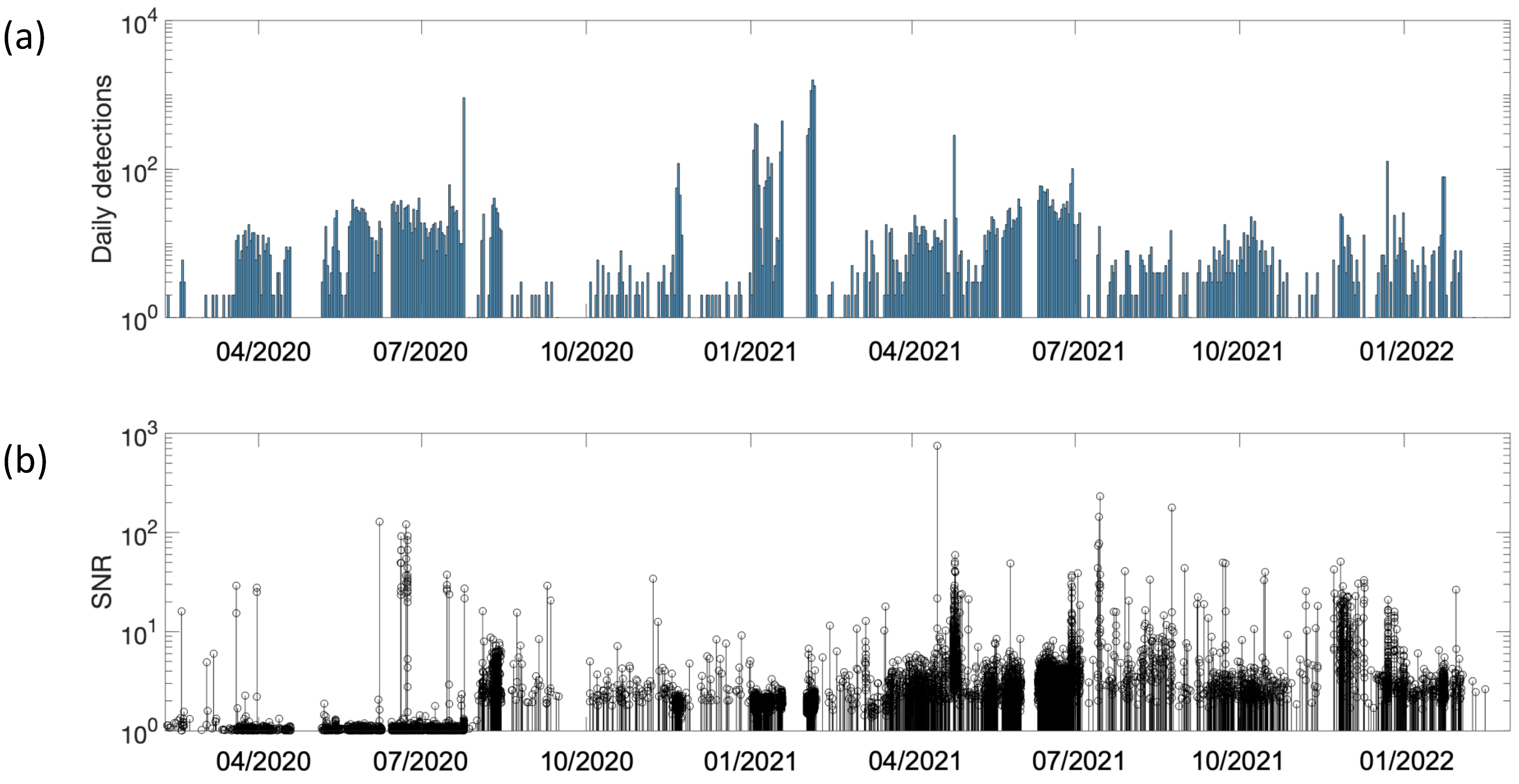
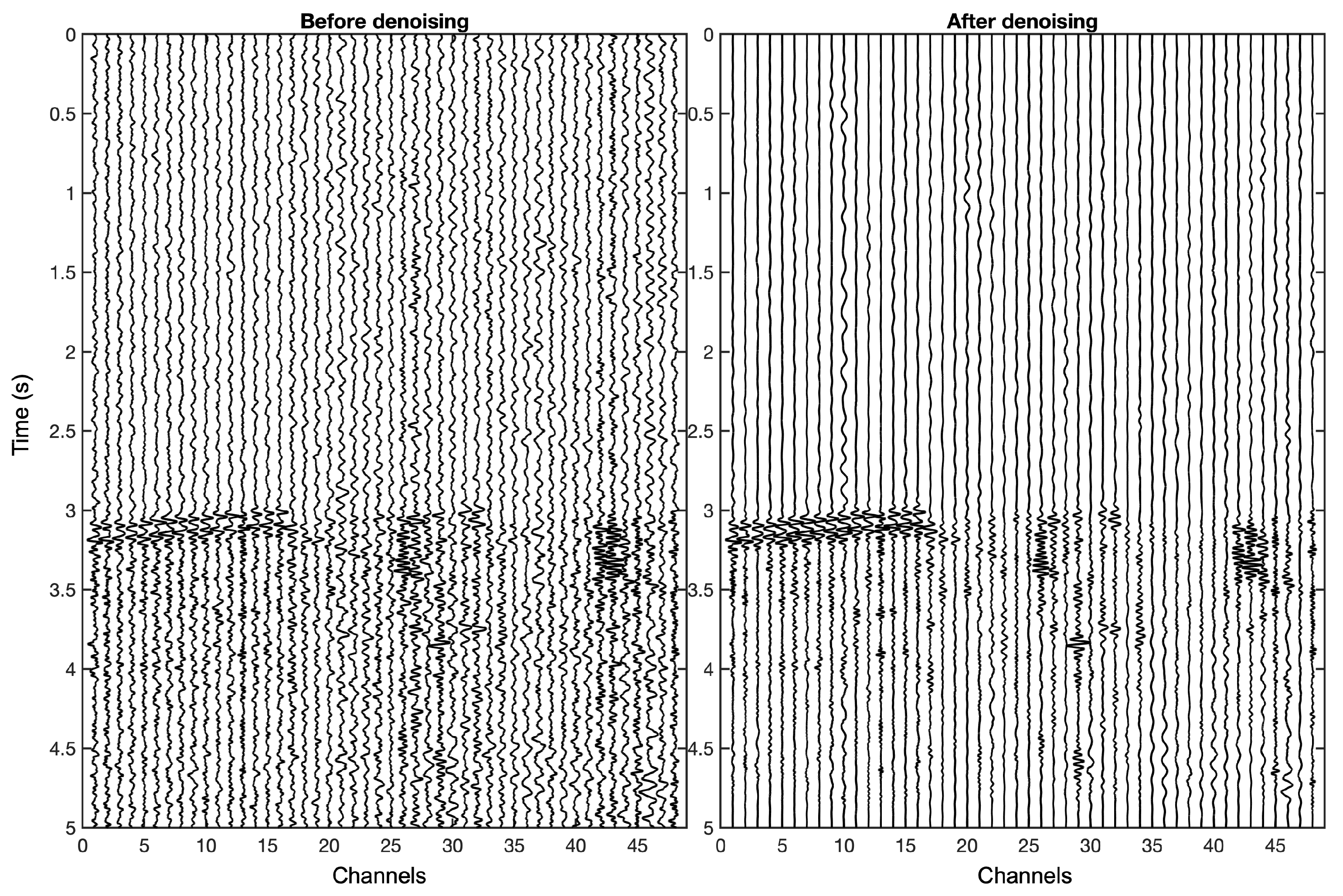


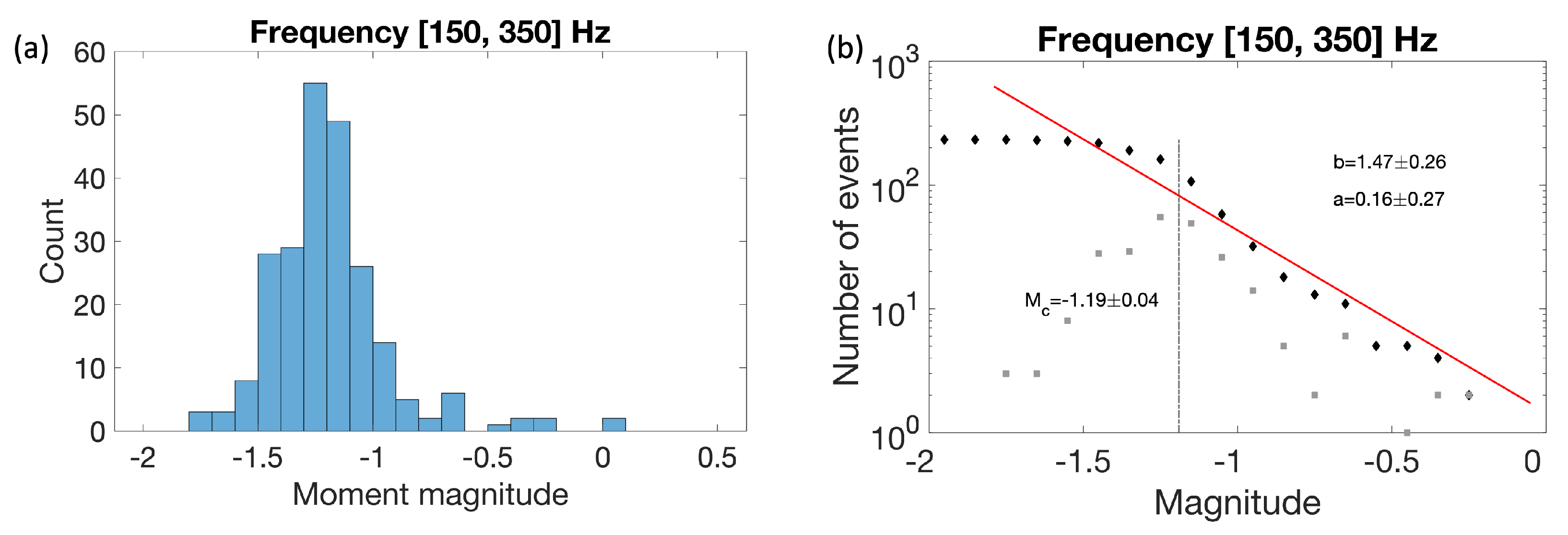
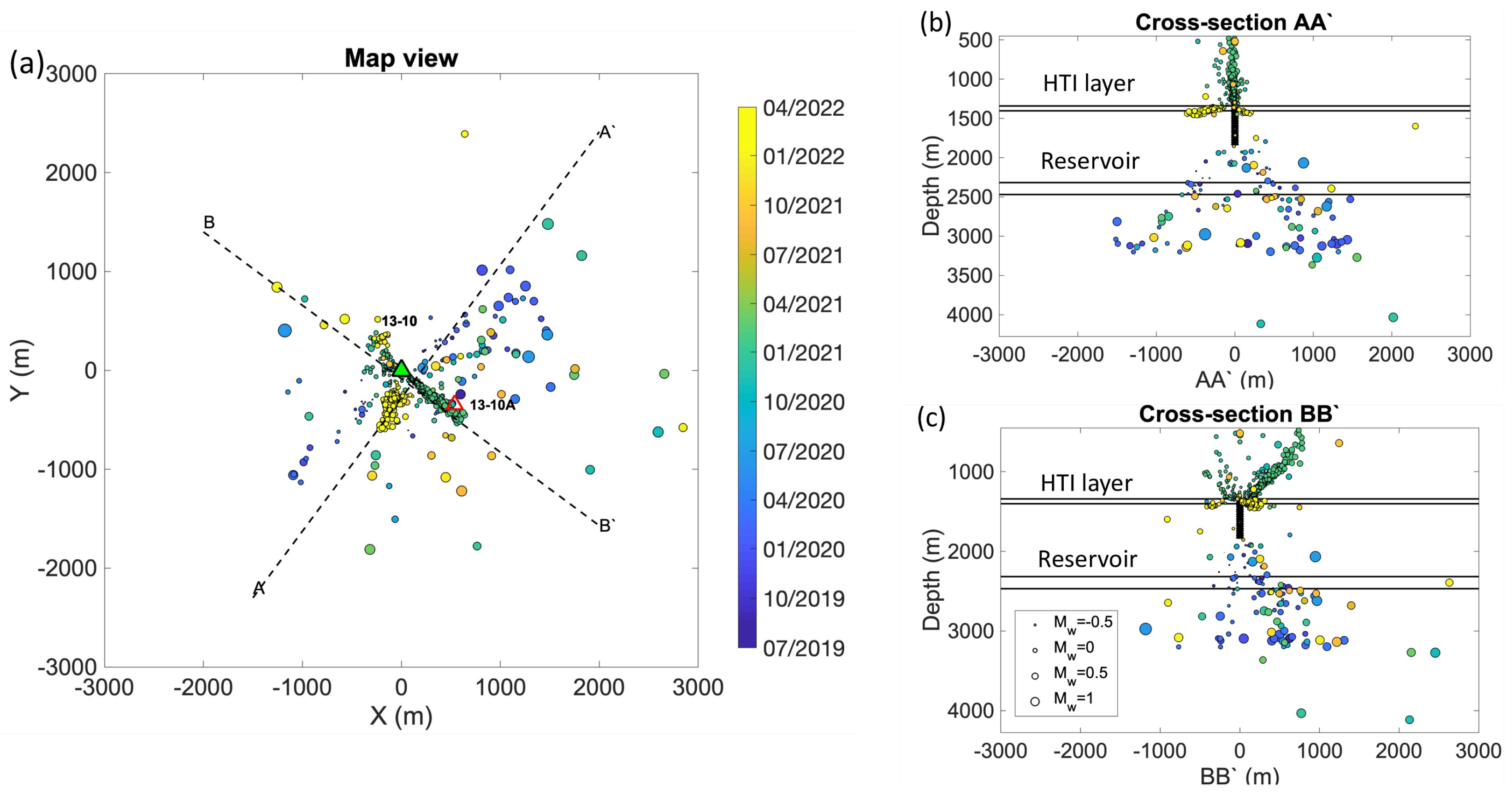

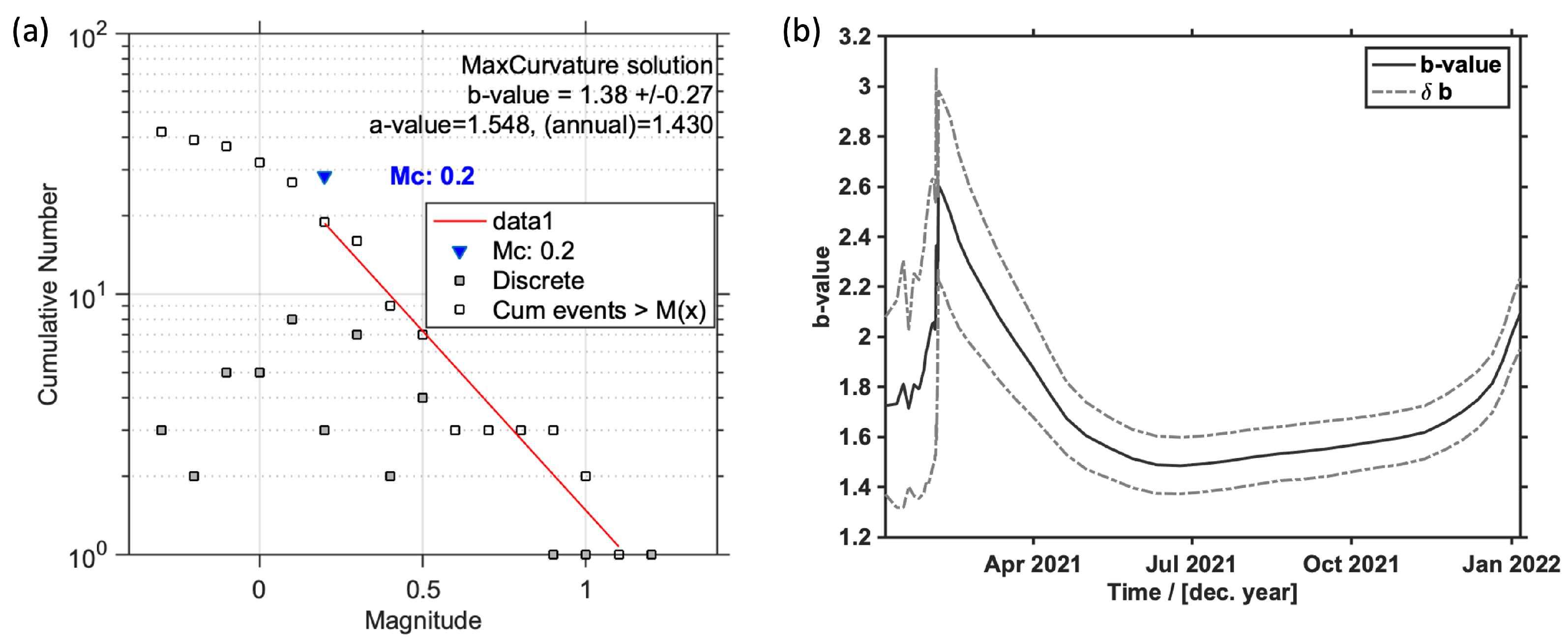
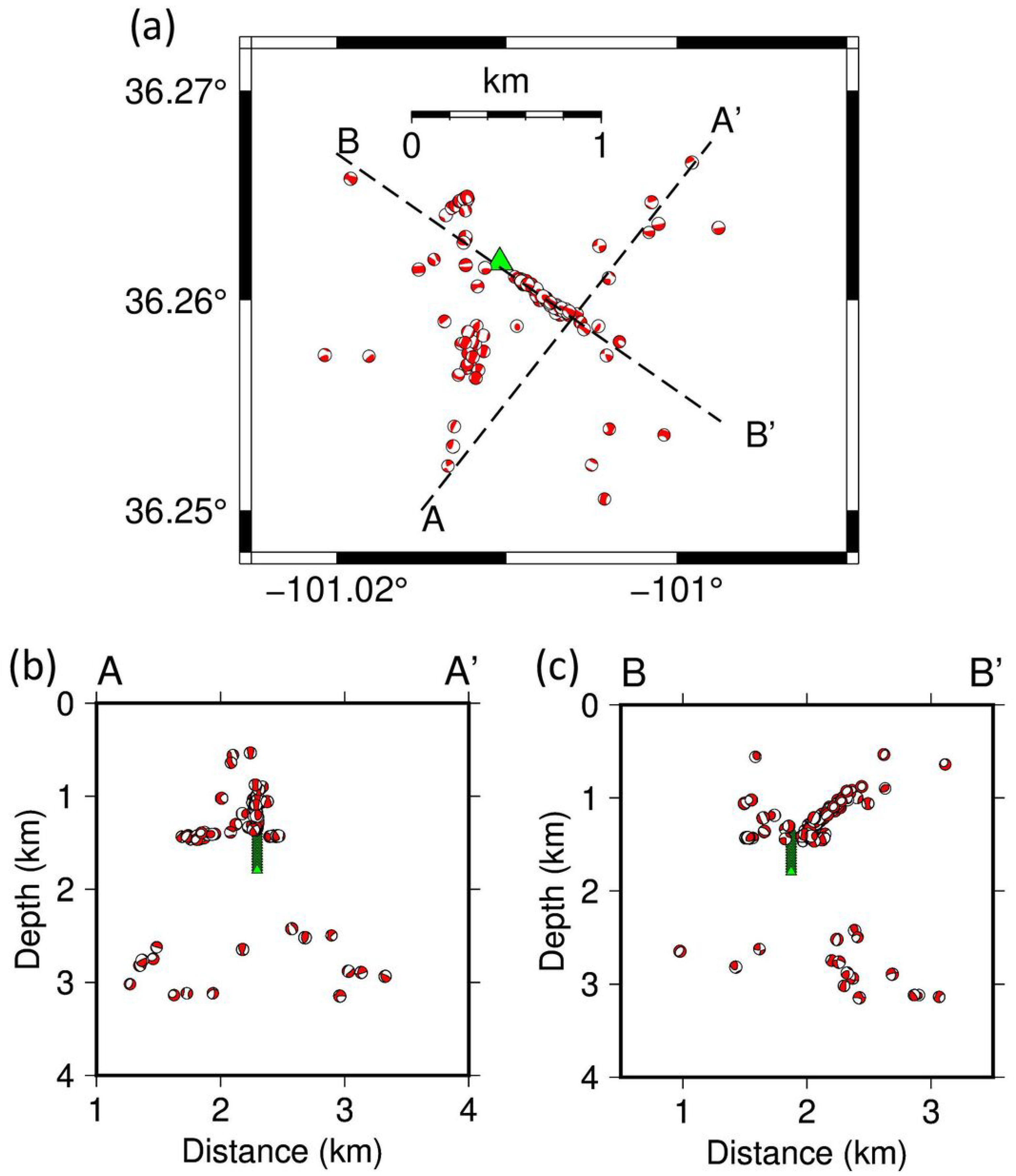

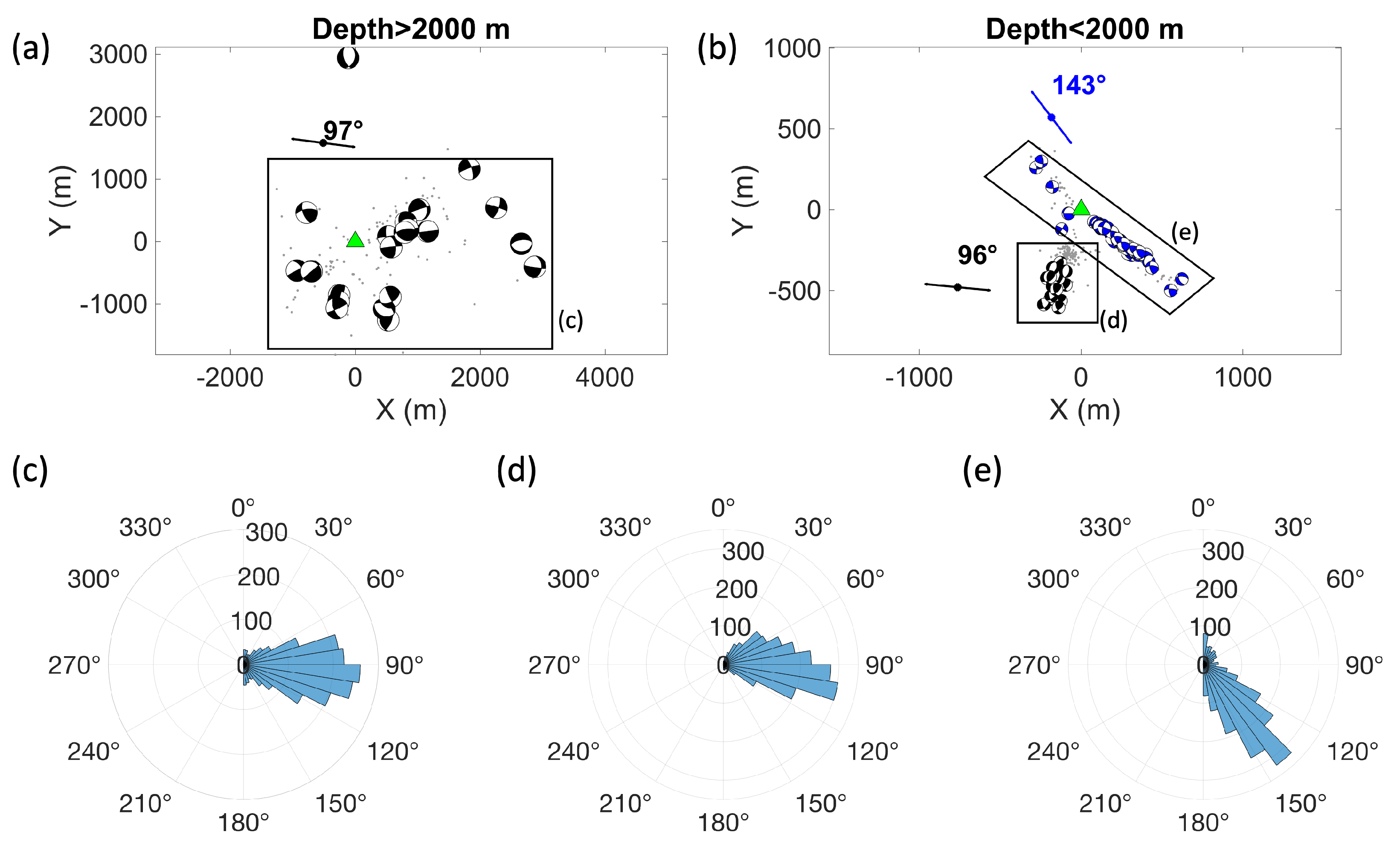


Disclaimer/Publisher’s Note: The statements, opinions and data contained in all publications are solely those of the individual author(s) and contributor(s) and not of MDPI and/or the editor(s). MDPI and/or the editor(s) disclaim responsibility for any injury to people or property resulting from any ideas, methods, instructions or products referred to in the content. |
© 2023 by the authors. Licensee MDPI, Basel, Switzerland. This article is an open access article distributed under the terms and conditions of the Creative Commons Attribution (CC BY) license (https://creativecommons.org/licenses/by/4.0/).
Share and Cite
Qin, Y.; Li, J.; Huang, L.; Gao, K.; Li, D.; Chen, T.; Bratton, T.; El-kaseeh, G.; Ampomah, W.; Ispirescu, T.; et al. Microseismic Monitoring at the Farnsworth CO2-EOR Field. Energies 2023, 16, 4177. https://doi.org/10.3390/en16104177
Qin Y, Li J, Huang L, Gao K, Li D, Chen T, Bratton T, El-kaseeh G, Ampomah W, Ispirescu T, et al. Microseismic Monitoring at the Farnsworth CO2-EOR Field. Energies. 2023; 16(10):4177. https://doi.org/10.3390/en16104177
Chicago/Turabian StyleQin, Yan, Jiaxuan Li, Lianjie Huang, Kai Gao, David Li, Ting Chen, Tom Bratton, George El-kaseeh, William Ampomah, Titus Ispirescu, and et al. 2023. "Microseismic Monitoring at the Farnsworth CO2-EOR Field" Energies 16, no. 10: 4177. https://doi.org/10.3390/en16104177
APA StyleQin, Y., Li, J., Huang, L., Gao, K., Li, D., Chen, T., Bratton, T., El-kaseeh, G., Ampomah, W., Ispirescu, T., Cather, M., Balch, R., Zheng, Y., Tang, S., McCormack, K. L., & McPherson, B. (2023). Microseismic Monitoring at the Farnsworth CO2-EOR Field. Energies, 16(10), 4177. https://doi.org/10.3390/en16104177









